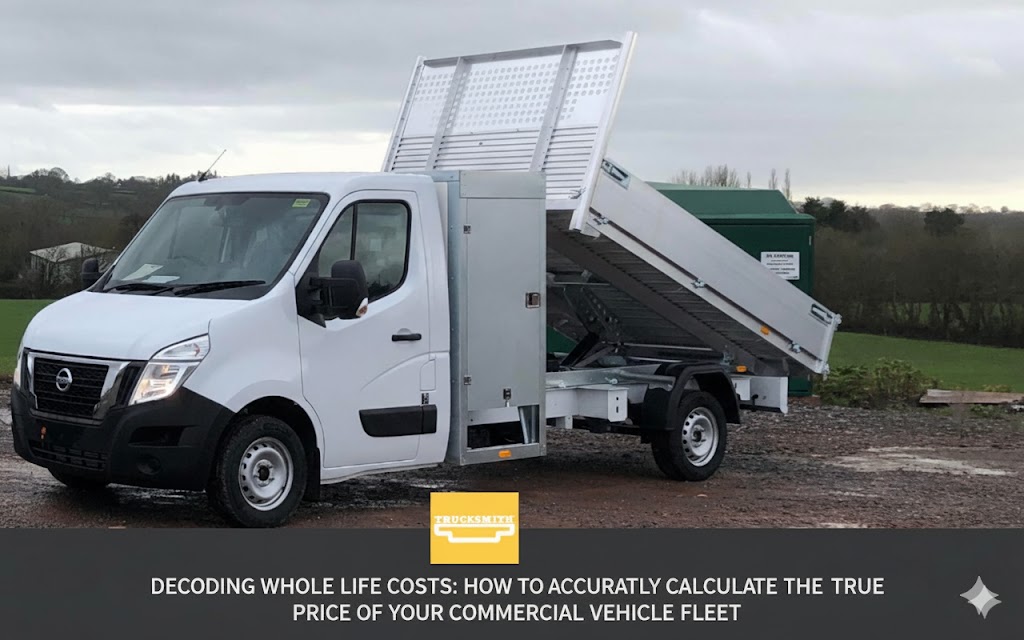When it comes to acquiring commercial vehicles, it’s tempting to focus solely on the sticker price. After all, a good deal upfront feels like a win, right? But for businesses operating a fleet, this can be a costly oversight. To truly understand the financial impact of your commercial vehicles, you need to look beyond the initial purchase and decode their Whole Life Costs (WLC).
WLC encompasses every expense associated with a vehicle from the moment you acquire it until you sell or dispose of it. Ignoring these long-term costs can lead to inaccurate budgeting, missed opportunities for savings, and ultimately, a less profitable operation.
So, how do you accurately calculate the true price of your commercial vehicle fleet? Let’s break down the key components:
1. Purchase Price (Initial Acquisition Cost)
This is the most obvious one, but it’s important to consider all factors. Are you buying new or used? What are the financing options? Don’t forget any upfront fees, taxes, or customisation costs that contribute to the initial outlay.
2. Fuel Costs
For many fleets, fuel is the single largest operating expense. This isn’t just about the current price at the pump; it’s about projecting future fuel consumption based on:
- Vehicle Efficiency: Different models and engine types will have varying MPG/Liters per 100km.
- Driving Habits and Routes: Stop-and-go city driving will consume more fuel than highway cruising.
- Load Weight: Heavier loads demand more fuel.
- Fuel Type: Diesel vs. petrol vs. electric will have different cost implications and availability.
Tools and telematics can help track actual fuel consumption and identify areas for improvement.
3. Maintenance and Repair Costs
This is where many businesses get caught out. Regular maintenance is crucial for vehicle longevity and safety, but unexpected repairs can significantly impact your budget. Consider:
- Scheduled Servicing: Oil changes, tire rotations, brake inspections – factor in the cost of parts and labor for routine maintenance.
- Wear and Tear: Tires, brakes, clutches, and other components have a finite lifespan.
- Unexpected Breakdowns: While harder to predict, setting aside a contingency fund or opting for extended warranties can mitigate these risks.
- Parts Availability and Cost: Specialised vehicles or older models might incur higher repair costs due to parts scarcity.
4. Insurance
Commercial vehicle insurance premiums can vary widely based on vehicle type, usage, driver history, and the level of coverage. Always obtain competitive quotes and ensure your coverage adequately protects your assets and operations.
5. Road Tax and Licensing Fees
These are recurring annual or semi-annual costs that must be factored into your WLC. They can vary based on vehicle type, weight, and emissions.
6. Driver Wages and Overheads (if applicable)
While not directly a vehicle cost, if you employ drivers, their wages, benefits, and training are an essential part of the overall operational cost of running your fleet.
7. Administration and Management Costs
Don’t forget the hidden costs of managing your fleet:
- Vehicle Tracking and Telematics Subscriptions: Tools that help optimise routes, monitor driver behaviour, and track fuel usage.
- Fleet Management Software: Systems for scheduling maintenance, tracking vehicle history, and managing compliance.
- Internal Staff Time: The time spent by your team on fleet-related tasks.
8. Depreciation and Residual Value
This is a critical, yet often overlooked, component of WLC. Depreciation is the decrease in a vehicle’s value over time. Residual Value is what you expect to get for the vehicle when you sell it at the end of its operational life.
- Higher Residual Value = Lower WLC: A vehicle that holds its value well will cost you less in the long run.
- Factors Influencing Residual Value: Brand reputation, reliability, market demand, mileage, condition, and service history all play a role.
Understanding depreciation allows you to make informed decisions about vehicle replacement cycles. Replacing vehicles before their residual value plummets can save you money.
Putting it All Together: The WLC Calculation
To accurately calculate WLC, you’ll need to gather data and make projections. You can use spreadsheets or dedicated fleet management software. Here’s a simplified approach:
WLC = (Purchase Price + Fuel Costs + Maintenance & Repair + Insurance + Taxes & Fees + Admin Costs) – Residual Value
This calculation should be done over the projected lifespan of the vehicle within your fleet (e.g., 3-5 years).
The Trucksmith Advantage
At Trucksmith, we understand that a commercial vehicle is an investment, not just an expense. We design and build high-quality, efficient vehicles that not only offer a competitive purchase price but also contribute to lower whole life costs through:
- Durability and Reliability: Reducing unexpected breakdowns and repair costs.
- Fuel Efficiency: Innovative designs that help you save at the pump.
- Strong Residual Values: Our reputation for quality means our vehicles often retain their value better.
By partnering with Trucksmith, you’re not just buying a truck; you’re investing in a solution that helps you accurately decode your whole life costs and drive greater profitability for your business.
Ready to explore a commercial vehicle solution that truly understands your bottom line? Contact Trucksmith today on 01884 33001






 Translate
Translate